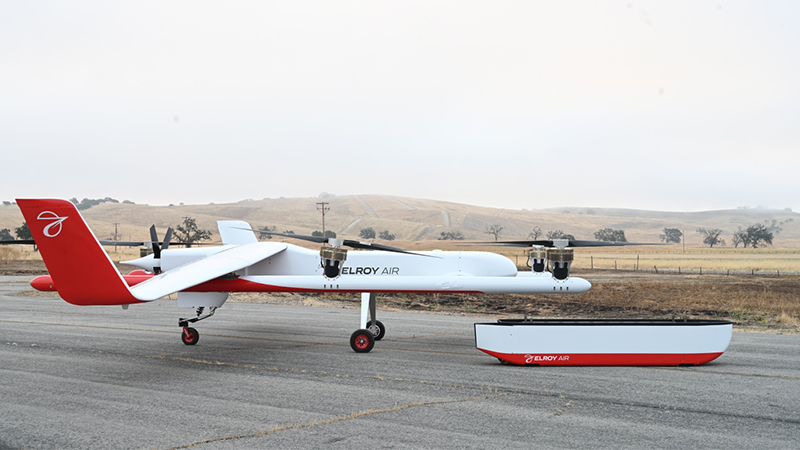

Image Courtesy Elroy Air.
A considerable portion of media attention around eVTOLs focuses on air taxis, perhaps because it is the most “interesting” use. However, the most lucrative sector is logistics eVTOLs. The companies designing cargo aircraft are numerous due to the industry’s vast potential.
As part of our deep dive into eVTOL tech, here are some industry leaders, along with a consideration of why logistics is the prime industry for autonomous air transport.
We have previously discussed UPS’ plans to integrate eVTOLs into its delivery structure. The reasons for using eVTOLs in cargo delivery are obvious: electric vehicles are better for the environment and can overcome geographic constraints better than land vehicles.
Of course, logistics is a broad category, so unsurprisingly companies hope to fill different niches. There are “traditional” looking drones, such as Bell’s APT, capable of carrying payloads up to 45 kilograms for a distance of 56 kilometres. Aircraft like this would be ideal for inter-city deliveries or cargo transport between business sites.
Then there are long-distance eVTOLs like Sabrewing’s Rhaegal Cargo UAV. It can transport payloads of up to 2,455 kilograms for 1,850 kilometres in all weather conditions. It would be suitable for delivering cargo to remote locations in areas inaccessible to normal eVTOLs.
In a similar vein is Elroy Air’s Chaparral. It can carry payloads up to 250 kilograms for distances of 480 kilometres. While this might not be suitable for servicing remote locations, it would work perfectly for inter-city, consumer-focused delivery routes.
Finally, some cargo eVTOLs are taking a completely different approach. The Flying Whales LCA60T, for example, is effectively a heavy-duty electric blimp. It can carry payloads up to 60 tonnes and will feature an internal cargo bay. Current plans include unloading cargo ships, use in logging and other large-scale industries.
Unlike industries such as emergency medical response, there is not a direct replacement in logistics. Medical helicopters already exist, and, although planes are a common part of supply chains, it is not such an obvious distinction. Many eVTOLs will focus on short-range links between businesses and suppliers, or directly to customers.
Even so, the benefits are clear. First, taking delivery vehicles off the roads will mean less traffic and (hopefully) less pollution. However, as electric road vehicles expand into logistic markets, this benefit will become less clear-cut.
The advantage of eVTOLs becomes obvious when we consider atypical delivery routes, such as servicing remote locations or use in certain industries. For example, the LCA60T can be used in the logging industry, and does not require roads or supporting infrastructure. It theoretically means less of a negative impact on the surrounding environment.
However, weather conditions are still a restriction. A study in Nature found that weather has a big impact on flyability, and this issue is compounded if an area relies on eVTOLs for important supplies. Road vehicles are far less dependent on weather, so, until this improves, they will still be the more viable option.
Of course, we are still in the early developmental stages of all eVTOL industries. This is made more obvious by the boom into niches previously unconsidered, such as heavy lifting and long-range cargo delivery. As technology improves, we will likely see these shortfalls addressed because logistics has a lot of room for the benefits eVTOLs can provide.
